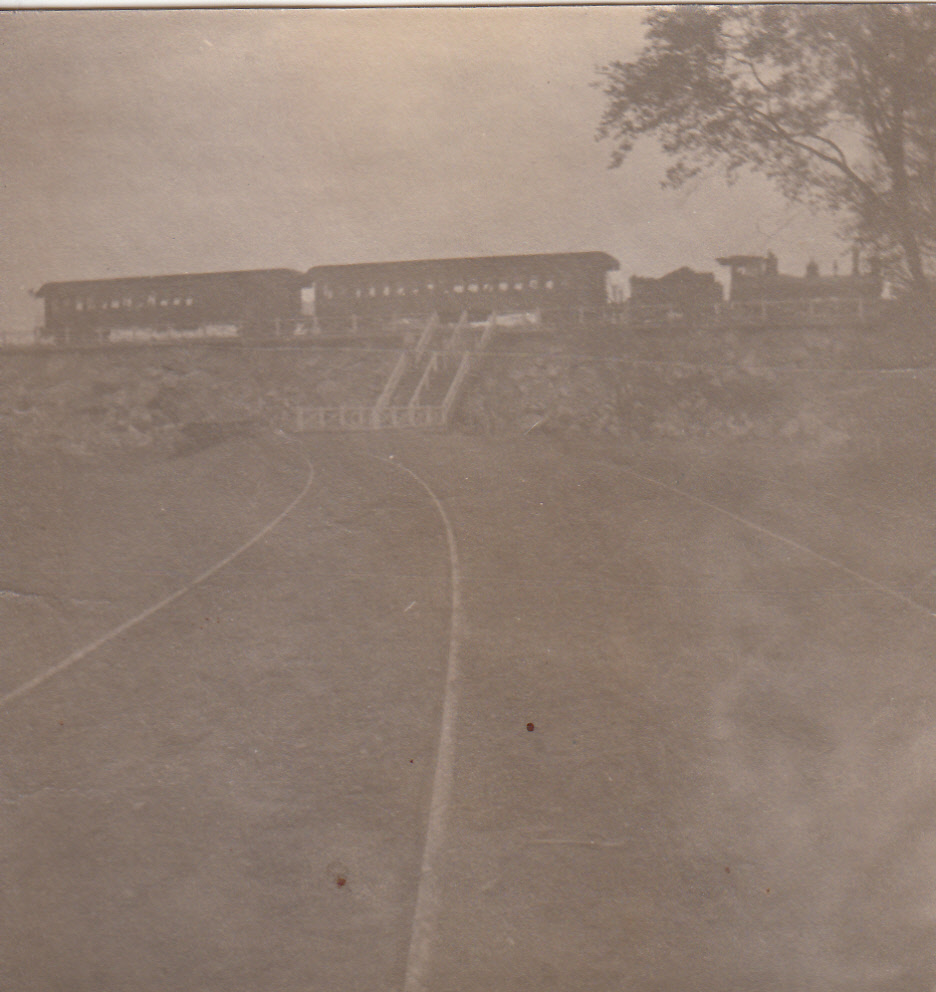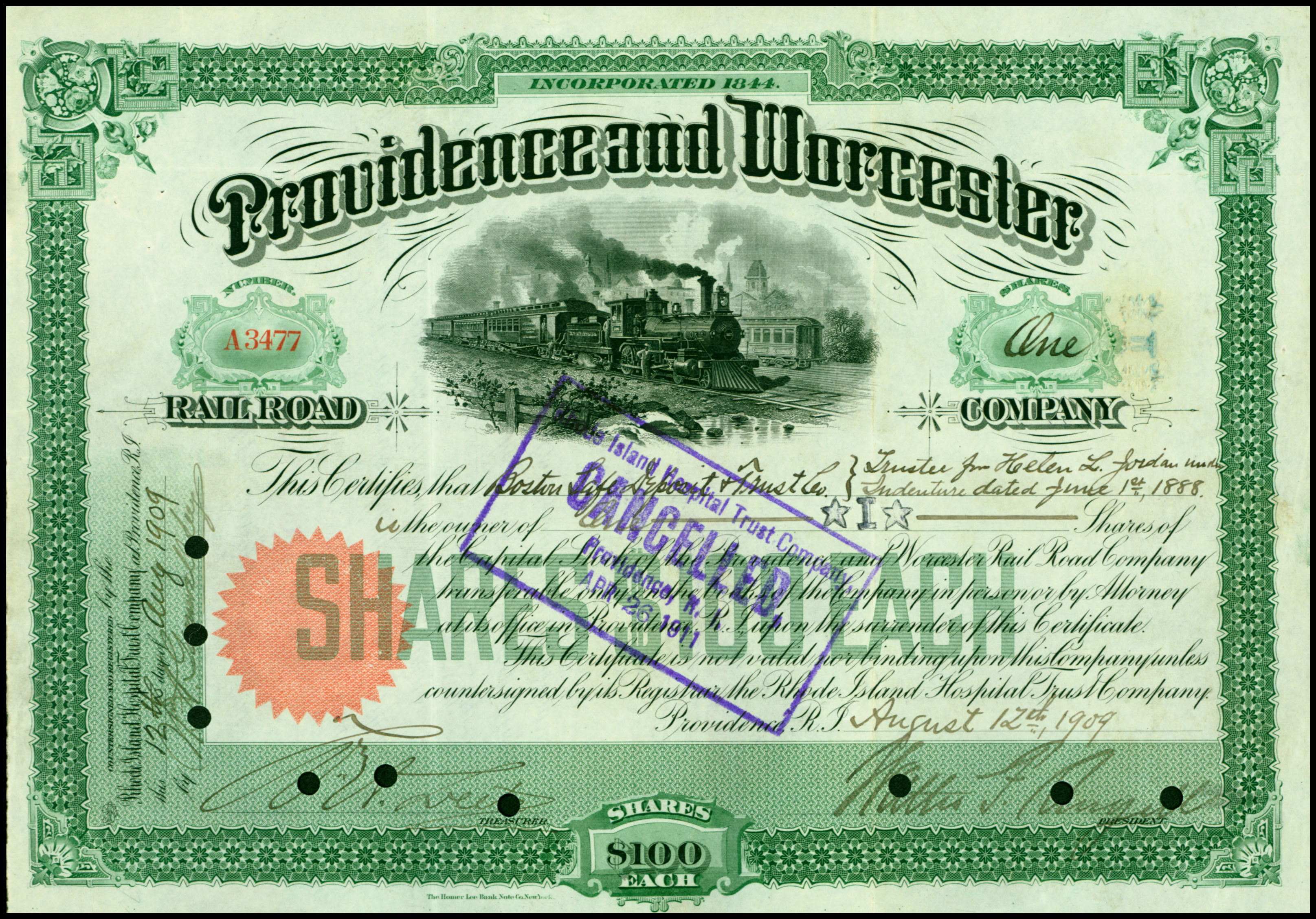|
New Haven Trap Rock Co.
The Branford Steam Railroad is standard-gauge industrial railroad that serves the Tilcon Connecticut stone quarry in North Branford, Connecticut, in the United States. It was founded in 1903 by Louis A. Fisk, a businessman from Branford, Connecticut, to transport passengers to a trotting park for horses. Fisk also chartered the Damascus Railroad in 1905 to extend the route of the Branford Steam Railroad to North Branford to serve quarries. The Damascus Railroad's charter was amended in 1907 to allow a further extension to the site of a new quarry adjacent to Totoket Mountain. The Branford Steam Railroad took control of the Damascus Railroad in 1909, and has been the operator since. Within a decade of the Branford Steam Railroad's founding, it ended passenger business in favor of freight transport. The company has hauled trap rock from the Totoket Mountain quarry in North Branford continuously since 1914. That year, Fisk sold the railroad to a group seeking to develop a quarr ... [...More Info...] [...Related Items...] OR: [Wikipedia] [Google] [Baidu] |
Connecticut Route 80
Connecticut Route 80 is a 25.9 mile highway that runs through south-central Connecticut. The west end is at CT 17 in Quinnipiac Meadows neighborhood of New Haven, and the east end is at CT 154 in Deep River. Route 80 runs within 5 miles of many town squares- including Downtown New Haven. Route description Route 80 begins at the junction of I-91 and Route 17 in New Haven (at exit 8). Route 17 splits off and heads northward right after the exit. Route 80 begins as a 4-lane principal arterial road in New Haven, continuing due east for almost its entire length. It has a junction with the southern end of Route 103 before entering East Haven. It then passes the north end of Route 100 before crossing into North Branford. In North Branford, it has a overlap with Route 22, during which it meets the north end of Route 139. Just east of the Route 22 concurrency, Route 80 becomes a 2 lane minor rural arterial road and enters Guilford. It crosses Route 77 in North Guilford befo ... [...More Info...] [...Related Items...] OR: [Wikipedia] [Google] [Baidu] |
Providence And Worcester Railroad
The Providence and Worcester Railroad is a Class II railroad operating of tracks in Rhode Island, Massachusetts, and Connecticut, as well as New York via trackage rights. The company was founded in 1844 to build a railroad between Providence, Rhode Island, and Worcester, Massachusetts, and ran its first trains in 1847. A successful railroad, the P&W subsequently expanded with a branch to East Providence, Rhode Island, and for a time leased two small Massachusetts railroads. Originally operating on a single track, its busy mainline was double-tracked beginning in 1853, following a fatal collision that year in Valley Falls, Rhode Island. The P&W operated independently until 1888, when the New York, Providence and Boston Railroad (NYP&B) leased it; the New York, New Haven and Hartford Railroad obtained the lease in 1892 when it purchased the NYP&B. The P&W continued to exist as a company, as special rules protecting minority shareholders made it prohibitively expensive for th ... [...More Info...] [...Related Items...] OR: [Wikipedia] [Google] [Baidu] |
New York (state)
New York, officially the State of New York, is a state in the Northeastern United States. It is often called New York State to distinguish it from its largest city, New York City. With a total area of , New York is the 27th-largest U.S. state by area. With 20.2 million people, it is the fourth-most-populous state in the United States as of 2021, with approximately 44% living in New York City, including 25% of the state's population within Brooklyn and Queens, and another 15% on the remainder of Long Island, the most populous island in the United States. The state is bordered by New Jersey and Pennsylvania to the south, and Connecticut, Massachusetts, and Vermont to the east; it has a maritime border with Rhode Island, east of Long Island, as well as an international border with the Canadian provinces of Quebec to the north and Ontario to the northwest. New York City (NYC) is the most populous city in the United States, and around two-thirds of the state's popul ... [...More Info...] [...Related Items...] OR: [Wikipedia] [Google] [Baidu] |
Palisades Interstate Park Commission
The Palisades Interstate Park Commission (PIPC) was formed in 1900 by Governors Theodore Roosevelt of New York and Foster Voorhees of New Jersey in response to the quarrying operations along the Palisades Cliffs of New Jersey. The Palisades, a National Natural Landmark that are also called the New Jersey Palisades or the Hudson River Palisades, are a line of steep cliffs along the west side of the lower Hudson River in Northeastern New Jersey and Southeastern New York in the United States. After its formation, the PIPC quickly moved to acquire the lands at the base of the Palisades to stop quarrying operations in both New York and New Jersey. The commission consists of ten commissioners, five appointed by each governor, and was ratified by an Act of Congress in 1937 when its interstate compact was approved. Today, the Commission owns and operates more than 125,000 acres of public parkland in New York and New Jersey including 21 state parks, 8 historic sites, and the Palisades Inte ... [...More Info...] [...Related Items...] OR: [Wikipedia] [Google] [Baidu] |
Tram
A tram (called a streetcar or trolley in North America) is a rail vehicle that travels on tramway tracks on public urban streets; some include segments on segregated right-of-way. The tramlines or networks operated as public transport are called tramways or simply trams/streetcars. Many recently built tramways use the contemporary term light rail. The vehicles are called streetcars or trolleys (not to be confused with trolleybus) in North America and trams or tramcars elsewhere. The first two terms are often used interchangeably in the United States, with ''trolley'' being the preferred term in the eastern US and ''streetcar'' in the western US. ''Streetcar'' or ''tramway'' are preferred in Canada. In parts of the United States, internally powered buses made to resemble a streetcar are often referred to as "trolleys". To avoid further confusion with trolley buses, the American Public Transportation Association (APTA) refers to them as "trolley-replica buses". In the Unit ... [...More Info...] [...Related Items...] OR: [Wikipedia] [Google] [Baidu] |
Connecticut General Assembly
The Connecticut General Assembly (CGA) is the state legislature of the U.S. state of Connecticut. It is a bicameral body composed of the 151-member House of Representatives and the 36-member Senate. It meets in the state capital, Hartford. There are no term limits for either chamber. During even-numbered years, the General Assembly is in session from February to May. In odd-numbered years, when the state budget is completed, session lasts from January to June. The governor has the right to call for a special session after the end of the regular session, while the General Assembly can call for a " veto session" after the close in order to override gubernatorial vetoes. During the first half of session, the House and Senate typically meet on Wednesdays only, though by the end of the session, they meet daily due to increased workload and deadlines. History The three settlements that would become Connecticut (Hartford, Wethersfield, and Windsor) were established in 1633, and ... [...More Info...] [...Related Items...] OR: [Wikipedia] [Google] [Baidu] |
Horse-powered Railroad
A horsecar, horse-drawn tram, horse-drawn streetcar (U.S.), or horse-drawn railway (historical), is an Animal-powered transport, animal-powered (usually horse) tram or streetcar. Summary The horse-drawn tram (horsecar) was an early form of public transport, public rail transport, which developed out of wagonway, industrial haulage routes that had long been in existence, and from the bus, omnibus routes that first ran on public streets in the 1820s{{{citation needed, date=February 2022, using the newly improved iron or steel rail or 'Tramway (industrial), tramway'. They were local versions of the stagecoach lines and picked up and dropped off passengers on a regular route, without the need to be pre-hired. Horsecars on tramlines were an improvement over the omnibus, because the low rolling resistance of metal wheels on iron or steel track (rail transport), rails (usually Rail profile#Grooved rail, grooved Tram#History, from 1852 on) allowed the animals to haul a greater load f ... [...More Info...] [...Related Items...] OR: [Wikipedia] [Google] [Baidu] |



